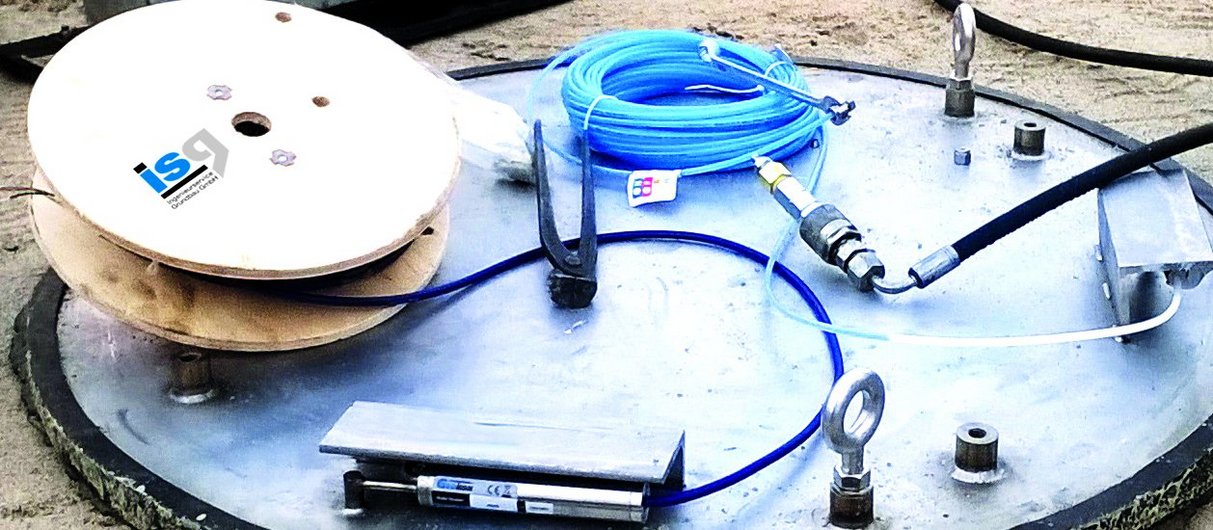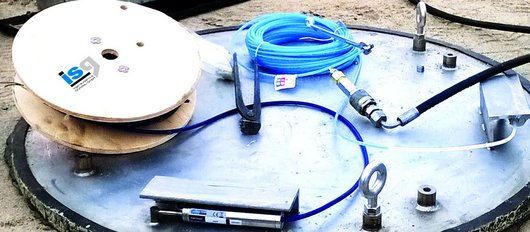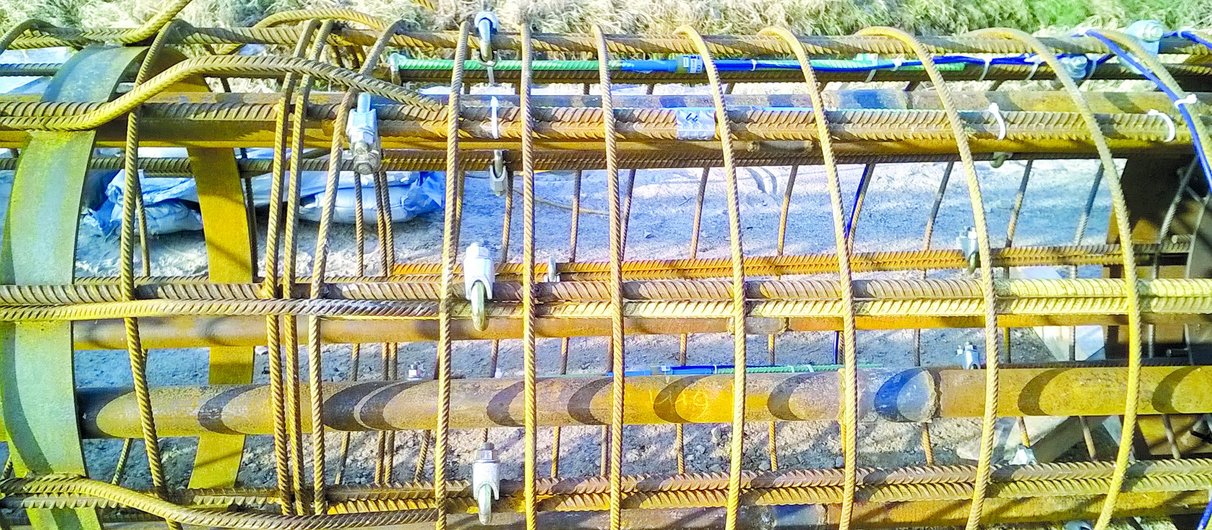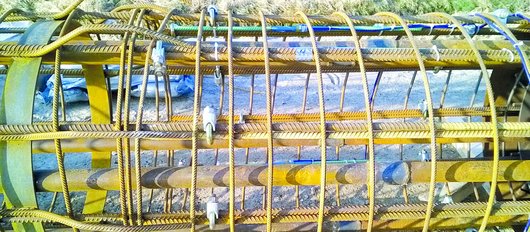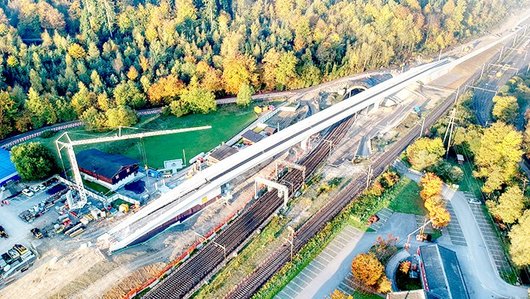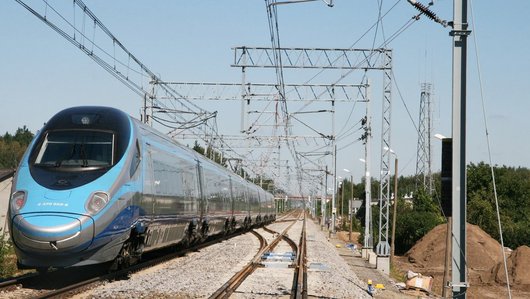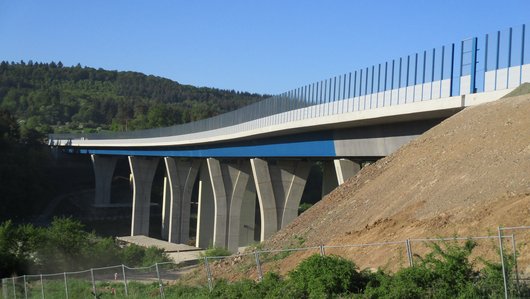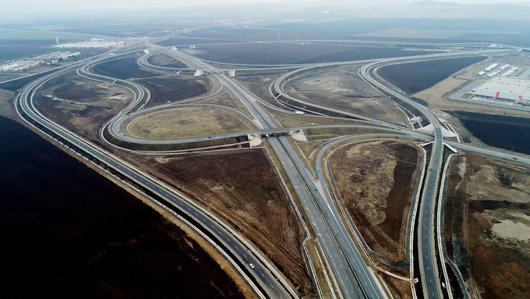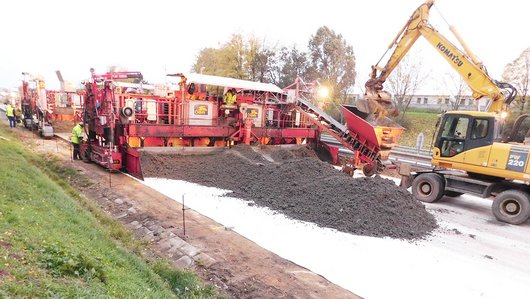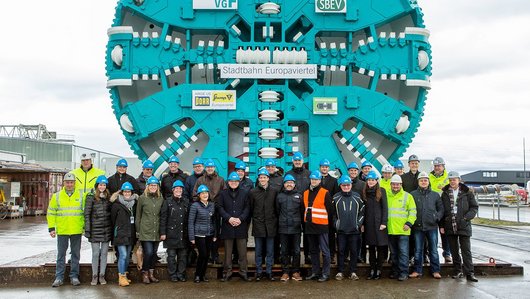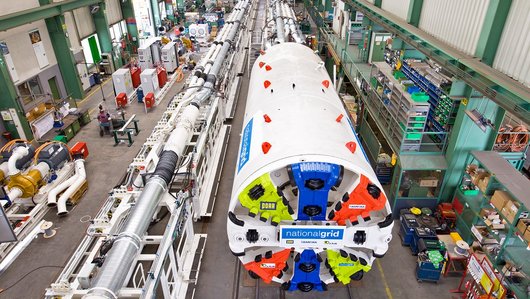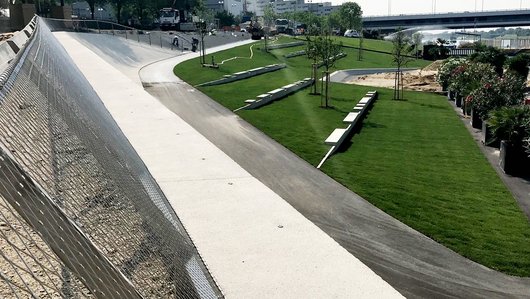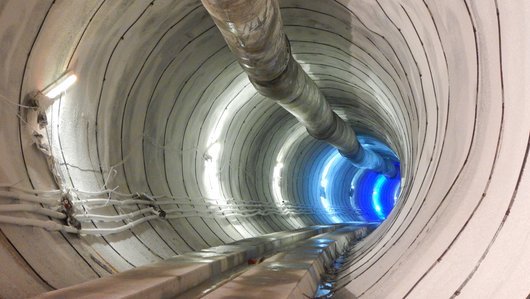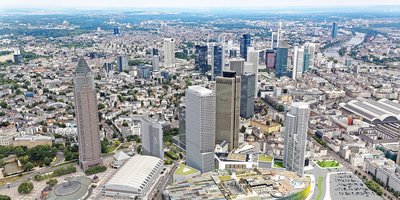
ONE Frankfurt am Main
In Frankfurt CA Immo is realising the tower ONE. PORR special civil engineering made a waterproof construction trough and pile foundation works.
The Ingenieurservice Grundbau GmbH isg monitored the works and carried out the technical measurements over the course of several years. For this, they also used a newly designed fibreglass technique.
-
EmployerCA Immo Deutschland GmbH
-
ContractorPORR Spezialtiefbau GmbH
-
ArchitectMeurer Generalplaner GmbH
-
Project typeSpecialist civil engineering, Foundation engineering, Measurement engineering
-
Project scopeConstruction pit, pile foundations, measurement engineering
-
Order volumeEUR 7.0 million
-
Construction start09/2017
-
Construction end06/2018
General
CA Immo is adding a distinctive new landmark to the famous skyline of Frankfurt's Europaviertel: the office and hotel complex ONE. A total of 62,500m² floor space will be created on a plot covering an area of just 4,755m². The bottom 14 floors will house a hotel with a restaurant and seminar area, the upper floors are designed to be used as offices. The building will feature a shared lobby, a co-working area on the 15th and 16th floors, and a sky bar at a height of 190m. Plans also include an underground garage with 470 parking spaces. The complex was designed by the Frankfurt architectural firm Meurer+Meurer.
In August 2017, CA Immo awarded PORR's specialised civil engineering services the contract to construct the entire construction pit and lay the deep foundations for the 190m, 49-storey tower. Some of the main challenges of this project include producing slurry-supported large bored piles with a length of up to 60m and, in particular, the site logistics, as the inner-city plot is situated right between the Skyline Plaza shopping centre, the Frankfurt Trade Fair Hall 1, and the congress centre Kap Europa.
A cramped construction site, on which up to 80 trucks daily departed excavators, demanded logistics. All under pressure.
The project Geological conditions
One special feature of the project was the geological composition of the subgrade. In addition, the high groundwater levels meant that the construction pit had to be produced as a waterproof trough, the walls of which had to be extended into the sealing layers. The fill materials lay on top of the underlying natural quaternary soils: sands, gravel and silt. Beneath these was the so-called "Frankfurt clay" or "Frankfurt formations", which consist of layers of clay, limestone beds and algae reefs. The limestone beds, which were several decimetres thick, presented an especially major challenge.
The construction pit
The construction pit was planned by the engineering firm Ingenieurservice Grundbau GmbH (isg). PORR used a cast-in-situ concrete diaphragm wall with three layers of anchoring for the larger and deeper part of the construction pit. The diaphragm works began after the guide wall had been completed; the limestone banks were expected to pose a challenge, but the team was able to puncture them successfully. The second and third tie positions were created after further excavation works.
The sheet piling in part of the construction pit required only one layer of anchoring. Rough drills were made along the shoring axis in this area in order to pierce the limestone banks. The L 605 sheet piles were then inserted into the subgrade using a modern sheet pile press. The insertion process was frame-led, vibration-free, low-noise and environmentally friendly. Vibration measurements were taken throughout the entire process.
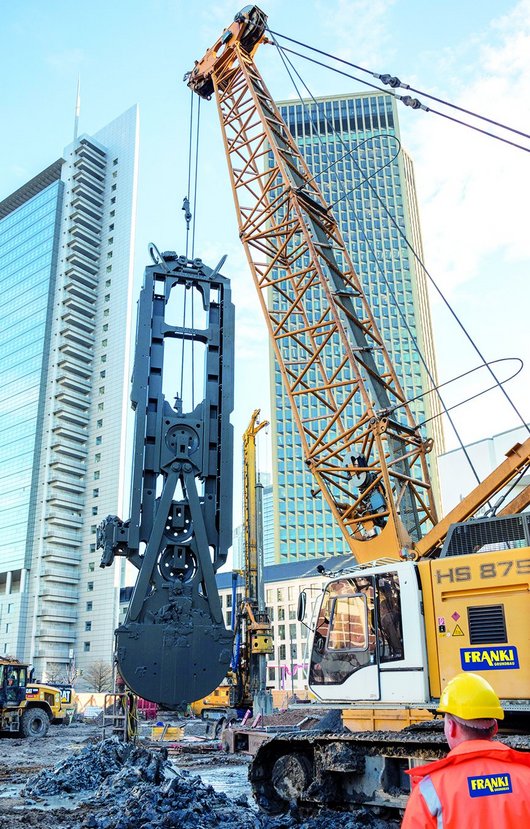

Pile foundations
Combined Pile Raft Foundations (CPRF) were used to transfer the load for the ONE project. This is a type of foundation where the load-bearing system is distributed across piles, the raft foundation, and the subgrade. Every element was used to transfer the load and the CPRF functioned as a subsidence brake. Large bored piles with a diameter of 150cm and lengths of up to 45m, measured from the bottom edge of the floor slab, were required for this purpose. The bored piles were produced from the upper surface level. This resulted in pile lengths of up to 60m. When producing piles of this length, there is a risk of the pile system getting stuck in the subgrade or even snapping off. For this reason, PORR produced the large bored piles as slurry-suspended piles. Bentonite slurry was used for this purpose and was also used to produce the cast-in-situ concrete diaphragm walls. The reinforcement cages were delivered to the construction site in two or three pieces and fitted together during the installation process. Four to seven piles were produced per week. Four large bored piles were fitted with measuring technology in order to record the load-bearing characteristics of the Combined Pile Raft Foundations (CPRF) over the course of several years.
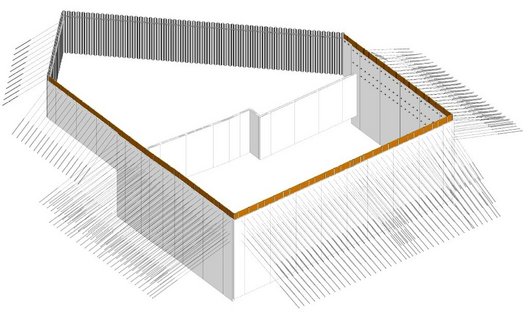

Technical monitoring
The construction scheme will be monitored by the measurement engineers at isg for several years. This comprises inclinometer measurements, measuring the anchoring forces and vibrations during the foundation works and technical monitoring of the CPRF. Four large bored piles with a length of approximately 45m each were fitted with measuring instruments for this purpose. These are to record the load-bearing characteristics of the CPRF over time. Starting in mid-January 2018, the four measurement piles were fitted and produced with pressure pads at the foot and extension sensors for two gauging sections along the shaft of each pile. Contact pressure and pore water pressure sensors under the base slab and pressure pads at the head of each pile will follow in the second quarter of 2018.
New fibre optic measurement technology
One alternative to technical monitoring involves fitting the piles with fibre optic sensor cables. This fibreglass method was developed by Arne Kindler, Head of Research and Development at the PORR Spezialtiefbau. It was first used for load testing the pile foundations for the extension to the K20 elevated road (BAB A7) in Hamburg. For the ONE project, one additional measurement pile was fitted with a fibre optic sensor cable to measure expansion, and another was fitted with a fibre optic measurement cable for measuring temperatures. This allowed the fibreglass measurement technology to be tested over a longer period of time. It also produced a redundant expansion measurement to be used in a direct comparison between the results achieved by conventional expansion sensors and fibre optic sensor cables.
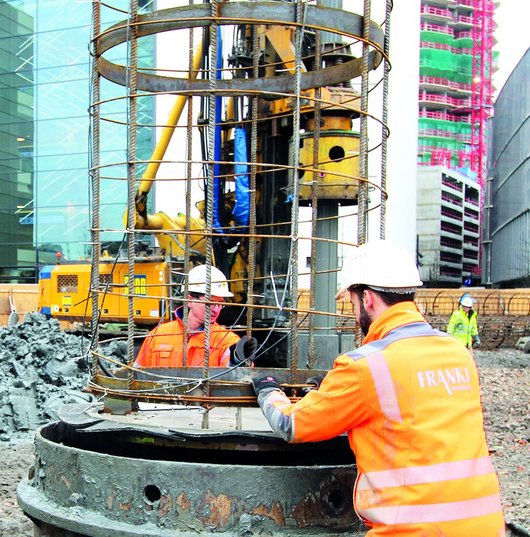

Quality assurance
Fibre optic measurements can capture not only the distribution of a pile's skin friction and foot resistance, but also the temperature variations inside the concrete, with a spatial resolution of around 5cm along the pile's axis. The variations in temperature while the concrete is hardening can indicate the quality of the concrete and the integrity of the pile shaft.
The first measurements will be taken in July 2018, shortly before the piles are handed over, in order to record the values for non-loaded piles. PORR is working in cooperation with isg for the planning, installation and measurement processes. The monitoring is being carried out by the Darmstadt company Prof. Quick + Kollegen.
Technical data
-
Construction pit depthup to 13m
-
Car parking spaces470
-
Concrete and granular subbase4.900m²
-
Diaphragm walls d=60cm, L ≤ 26m6.210m²
-
Sheet-pile wall, L ≤ 12,70m1.250m²
-
Strand anchors, triple-layered403 Stk.
-
Large bored piles d=1,5m, L ≤ 60m3.700m
-
Execution planningIngenieurservice Grundbau GmbH
-
Measurement engineeringIngenieurservice Grundbau GmbH
Summary
This challenging project provided PORR, in cooperation with isg, the opportunity to demonstrate its experience and expertise in the field of foundation engineering. The greatest challenges involved in creating the inner-city construction pit with pile foundations lay in the spatial constraints and the tight schedule. Every day, 30 concrete mixers and 2 reinforcement deliveries arrived on the construction site and, in the early stages, 25
lorry-loads of spoil were removed. This number rose to 60-80 in the later stages of the project. The completed construction pit and the large bored piles were handed over in June 2018. The dewatering measures for buoyancy-proofing the building and the technical monitoring of the large bored piles will continue.

